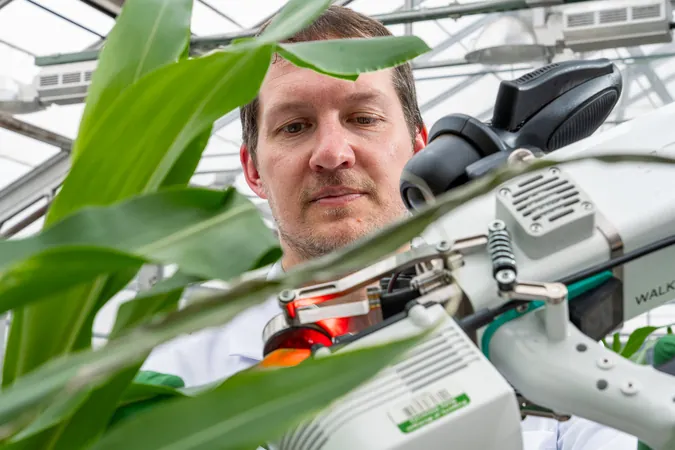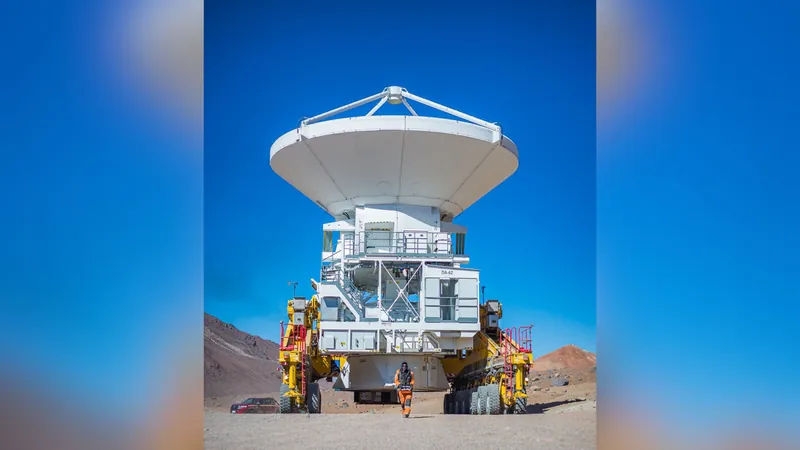
Is Climate Change Threatening a Key Prenatal Vitamin?
2025-09-03
Author: Charlotte
New Study Uncovers Shocking Link Between Plant Processes and Prenatal Nutrition
Researchers at Michigan State University have revealed a surprising twist in plant biology: a process long deemed wasteful, known as photorespiration, is actually vital for producing a crucial prenatal vitamin.
For the first time, scientists have quantified the carbon flow through photorespiration that leads to the creation of folates—a critical group of nutrients that includes vitamin B9, essential for preventing birth defects.
Led by Berkley Walker, an associate professor at MSU, the study highlights that nearly 6% of the carbon absorbed by plants is dedicated to folate synthesis. However, when photorespiration is inhibited, this figure plummets by five times!
Implications for Human Health and Nutrition
These findings, recently published in the journal Nature Plants, hold major implications for human health. If climate change leads to higher carbon dioxide levels, plants may become less nutritious, jeopardizing the health of populations relying heavily on staple crops like rice.
"In regions where rice constitutes most of the diet, reduced nutrition in this staple could pose serious health risks," says Walker. With climate adaptation being complex, understanding plant responses is crucial for future food security.
How Plants Optimize Nutrition Through Chemistry
Plants function like intricate factories, converting sunlight, water, and carbon dioxide into sugars for sustenance. A key player in this process is the enzyme rubisco, which is responsible for capturing CO2.
However, rubisco can sometimes malfunction, grabbing oxygen instead and creating toxic waste like phosphoglycolate. Here is where photorespiration steps in, allowing plants to repurpose the waste into beneficial compounds.
Groundbreaking Experimental Techniques
To measure the true impact of photorespiration, Walker's team experimented with Arabidopsis thaliana, a common model plant. They analyzed carbon intake by sealing leaves in an infrared gas analyzer and then freezing them with liquid nitrogen to capture momentary chemical activities.
Using advanced mass spectrometry, they tracked how CO2 was integrated across various times, painting a clear picture of how plant nutrition might shift due to climate change.
A Wake-Up Call for Future Food Production
The results paint a troubling picture: as atmospheric CO2 rises, the necessity for photorespiration diminishes, potentially slashing the carbon flow for vitamin B9 production from nearly 6% to just 1%. This revelation is pivotal, particularly in understanding the risks associated with neural tube defects during pregnancy.
"By grasping how nature synthesizes this vital vitamin, we can work towards engineering nutrient-rich plants," Walker declares. This could become essential for populations that cannot easily supplement their diets with vitamins.
Next Steps in Agricultural Research
The Walker lab is now gearing up for field experiments with actual crop plants. They aim to determine if the trends observed in the lab hold true in real-world agricultural settings.
"We must build a solid understanding of these processes to successfully engineer plants for tomorrow's challenges," emphasizes Walker. Without this foundation, innovative applications may be out of reach.









 Brasil (PT)
Brasil (PT)
 Canada (EN)
Canada (EN)
 Chile (ES)
Chile (ES)
 Česko (CS)
Česko (CS)
 대한민국 (KO)
대한민국 (KO)
 España (ES)
España (ES)
 France (FR)
France (FR)
 Hong Kong (EN)
Hong Kong (EN)
 Italia (IT)
Italia (IT)
 日本 (JA)
日本 (JA)
 Magyarország (HU)
Magyarország (HU)
 Norge (NO)
Norge (NO)
 Polska (PL)
Polska (PL)
 Schweiz (DE)
Schweiz (DE)
 Singapore (EN)
Singapore (EN)
 Sverige (SV)
Sverige (SV)
 Suomi (FI)
Suomi (FI)
 Türkiye (TR)
Türkiye (TR)
 الإمارات العربية المتحدة (AR)
الإمارات العربية المتحدة (AR)